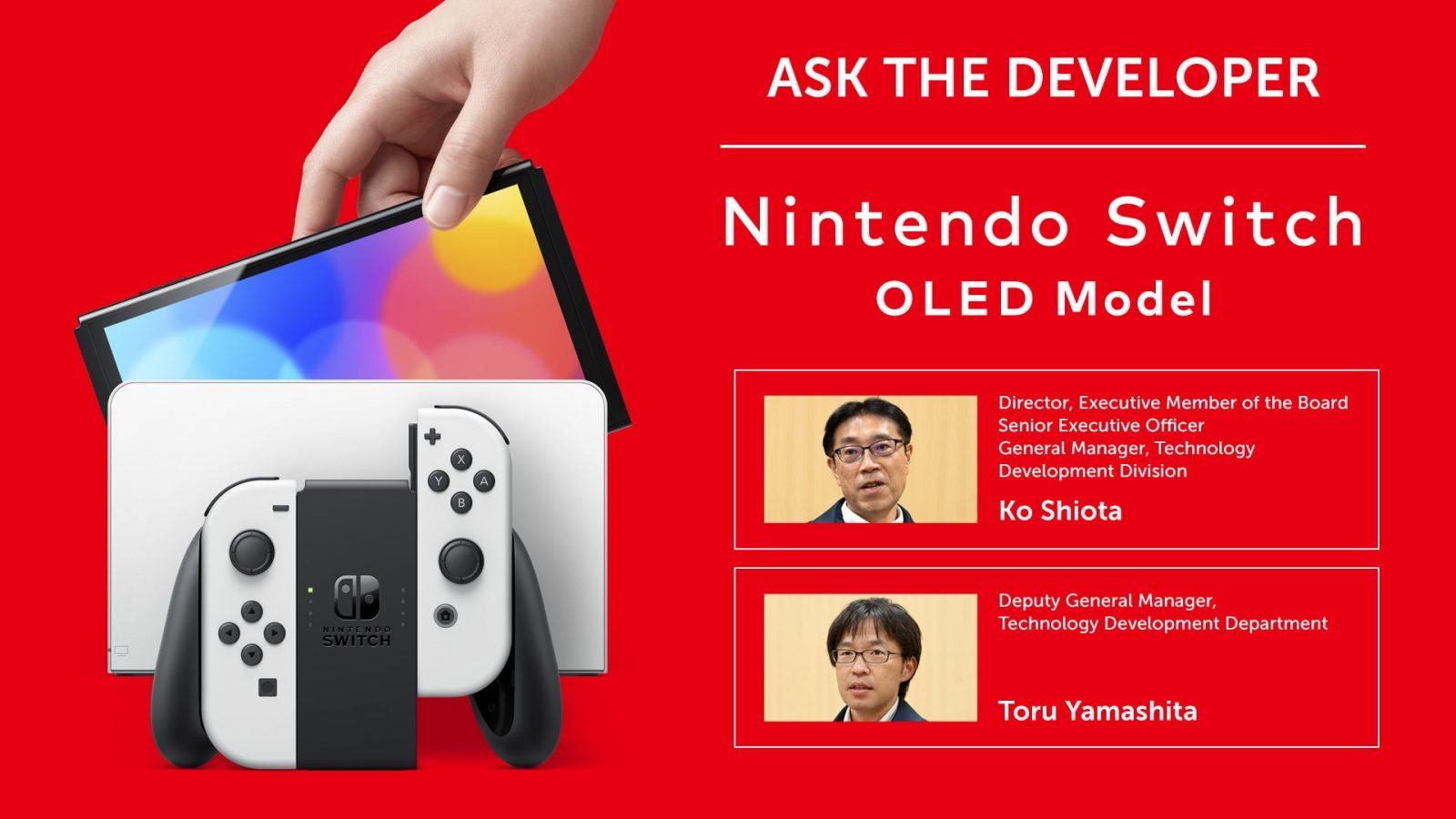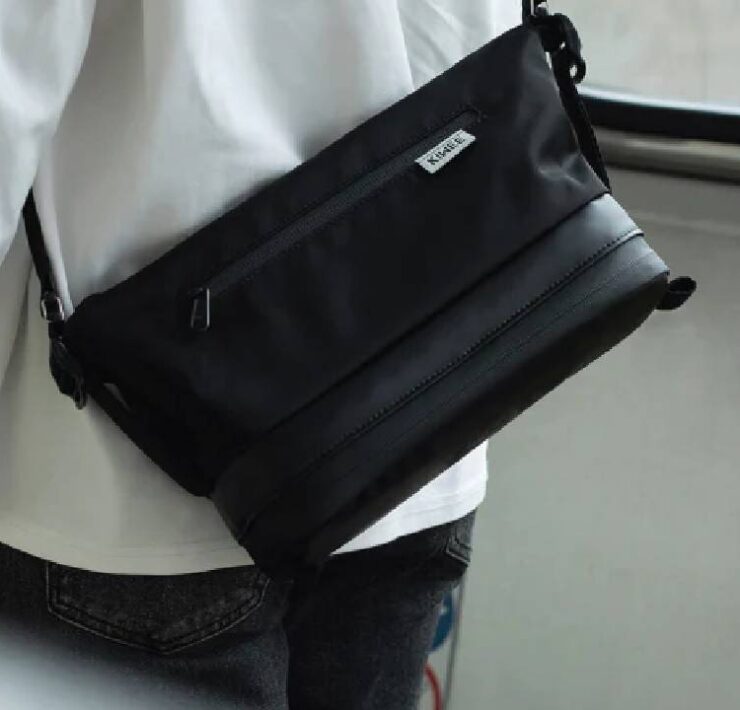Ask the Developer – Switch OLED Model Part 2 – Reveals Some Fun Information

Nintendo has released another Ask the Developer segment on their site, and this one focuses more on the Nintendo Switch OLED system, some of its inner parts, and how it came to be. It is a fascinating article that you can read here, but we will share some of the highlights.
In the Ask the Developer interview, we learn about the weight of the OLED, the changing of the audio and speakers, the improving of the JoyCons and more.
How the Switch OLED Came to Be:
Because we wanted to “refine” what we already had, we made sure that we wouldn’t add any new features that couldn’t be used with previously released software. For example, if we added a new button or function to the Joy-Con controllers, you wouldn’t be able to use it in previously released software or games, unless we updated them as well. Instead of doing that, we thought it would be better to improve and enhance the functions that our customers are currently experiencing.
Toru Yamashita, Deputy General Manager, Technology Development Department
The Increase in Screen Size
It was important not just to make the display more vivid but also to make the display itself thinner. These are part of the “visible changes,” but it also enabled us to make the stand bigger. The stand is used for tabletop mode, where you play by placing the console on a table, but you may experience glare depending on the angle of the screen. So we made it so that you can change the angle of the screen, making it easier to see and to create your ideal playing environment. In order to fulfill this while maintaining its size, it was necessary to reduce the thickness of the display itself.
Toru Yamashita
The Weight of the OLED
To have hinges that can support the stand at any angle already makes it pretty heavy, but when you replace plastic with metal, even at the same volume, it will be considerably heavier. But, for the overall weight of the console unit, it’s an increase of only about 20g. To put it differently, it’s because we scaled down in other places. Even with the original Nintendo Switch, we naturally tried to scale down everywhere we could to make it as light as possible, so it was not easy to find something we could scale down even further. But thanks to the help of the mechanical engineers, they came up with various ideas of scaling down while still maintaining its strength, and I believe we were able to achieve our goal.
Ko Shiota, Director, Executive Member of the Board
The Audio and Speakers
The speaker parts themselves were changed. If you listen and compare them, you’ll be able to notice the difference. In order to make use of the changed speakers, we had to redesign the mechanism that leads to the produced sound and the structure around the speakers. The screen is bigger, but this means less space inside the console. So it was a lot of work from a technical perspective to work out how to make the audio better. However, for people playing multiplayer games in tabletop mode or for people playing in handheld mode, we wanted to make the audio much clearer, as well as the screen much bigger and easier to see.
During the development of the new model, we wanted to achieve the same or better audio quality and acoustic pressure than existing Nintendo Switch models. When we tried using the open-type speakers, which we were using on our previous models, in the new model, we found that due to design restrictions, the sound ended up being quieter than before. We made some attempts to see if we could improve the design keeping the same speakers, but in the end we decided to use closed-type speakers, where the sound quality and pressure can be increased thanks to the back of the speaker being sealed.
Toru Yamashita
About Improving the JoyCons
Joy-Con controllers have lots of different features, so we’ve been continuing to make improvements that may not always be visible. Among others, the analog-stick parts have continuously been improved since launch, and we are still working on improvements.
The analog stick at first release cleared the Nintendo reliability test using the method of rotating the stick while continually applying a load to it, with the same criteria as the Wii U GamePad’s analog stick.
As we have always been trying to improve it as well, we have investigated the Joy-Con controllers used by the customers and repeatedly improved the wear resistance and durability.
The parts of the Joy-Con analog sticks are not something that can be bought off the shelf but are specially designed, so we have undergone a lot of considerations to improve them. In addition, we improved the reliability test itself, and we have continued to make changes to improve durability and clear this new test.
When the effects of our improvements were confirmed, we promptly incorporated them into the Joy-Con controllers that are included with the console, Nintendo Switch Lite, and the ones sold individually, that were manufactured at that time. This involves the internal components of the Joy-Con, so you can’t tell the improvements from the outside, but we use the new versions of the parts when we repair them. Also, similar continual improvements have been made for the Nintendo Switch Pro Controller as well.
Toru Yamashita
There is a whole lot more information and even greater details for each area, so I advise you to check out the Ask the Developer interview for yourself. Stay tuned for more news and information about the Switch OLED.
Thank you for stopping by Nintendo Link for all of your gaming news and updates! What do you think of this interview provided by Nintendo? Do you think it was helpful? Did you learn anything? Let us know in the comments below! Happy gaming, everyone.
What's Your Reaction?
My name is Jason Capp. I am a husband, father, son, and brother, and I am a gamer, a writer, and a wannabe pro wrestler. It is hard to erase the smile on this simple man.







